Many-body localization provides an example of strong ergodicity breaking. System has a memory of its initial state for any initial conditions. We also aim to understand what are the other possible weaker forms of ergodicity breaking. Below we show some recent results in this direction.
Paper on mixed phase space appears at PRX
Intuition suggests that generic, strongly interacting quantum systems establish thermal equilibrium even in isolation. In the process of thermalization, quantum information encoded in the system becomes irrecoverable. Hence, it is highly desirable to understand how thermal equilibrium is established and if it can be delayed. In our recent paper, Phys. Rev. X, 10, 011055 (2020), we provide a framework that allows one to find the slowly thermalizing states in strongly interacting quantum systems.
Using mathematical techniques to map the quantum dynamics of a strongly interacting system into a classical nonlinear dynamical system, we show that the resulting dynamical system generally has a mixed phase space where regions with regular motion coexist with chaotic islands. This can be illustrated by using Poincare maps. The animation below shows an example of the periodic trajectory in the dynamical system obtained from a quantum model.
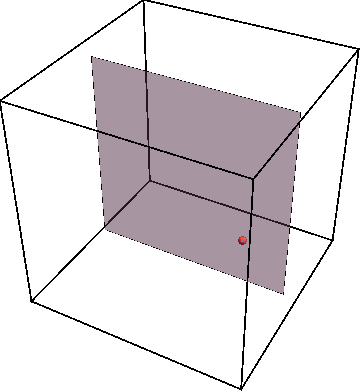
If we now initialize system not on the periodic trajectory but close-by in parameter space, the new trajectory will remain close to the periodic one as the animation below shows.
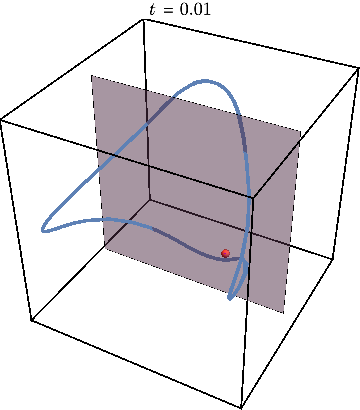
Now we can get rid of third dimension by tracking the times when trajectory crosses the gray plane. The periodic trajectory reduces to a simple dot on such a Poincare map, while the nearby trajectory generates a circle — a cross-section of KAM torus:

Finally, we may illustrate what happens when system is initialized far away from this periodic trajectory, resulting in chaos:
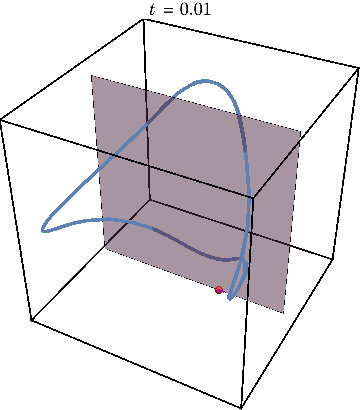
The Poincare section now looks very different from before:

Plotting the Poincare map for many different initial conditions shown by a different color, we obtain the figures used in the paper to illustrate the mixed character of phase space, where star shows location of periodic trajectory:
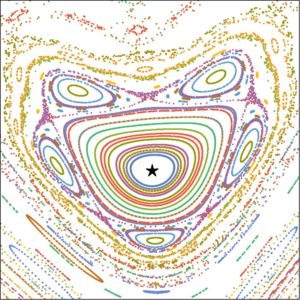
Since the trajectory of interest are stable, i.e. cannot be described by Lyapunov exponent, we characterize the error encountered in approximating quantum dynamics by a classical dynamical system. When the error is small, initializing the quantum system in the regular region of phase space can give rise to spectacular many-body revivals, in which the system periodically returns to its original state. This generalizes the mechanism of quantum many-body scars—revivals that happen when there is an unstable periodic trajectory. However, even when the error is large, we show that our framework can find states with parametrically slower thermalization.
Our work provides a practical tool to search for slowly thermalizing states of strongly interacting quantum systems. Moreover, our work puts the intriguing connection between classical and quantum chaos in many-body systems on a firm basis.
Weak ergodicity breaking from quantum many-body scars
Quantum scars present an example of weak ergodicity breaking in a context of quantum chaos. In our recent work in Nature Physics, we also generalized this concept to the many-body case.
Quantum scars in a billiard
Imagine a ball bouncing around in an oval stadium. It will bounce around chaotically, back and forth through the available space. As its motion is random, it will sooner or later visit every place in the stadium as is illustrated in the example below:

Amidst all the chaos, however, there might be a potential for order: if the ball happens to hit the wall at a special spot and at the “correct” angle of incidence, it might end up in a periodic orbit, visiting the same places in the stadium over and over and not visiting the others. Such a periodic orbit is extremely unstable as the slightest perturbation will divert the ball off its track and back into chaotic pondering around the stadium:

The same idea is applicable to quantum systems, except that instead of a ball bouncing around, we are looking at a wave, and instead of a trajectory, we are observing a probability function. Classical periodic orbits can cause a quantum wave to be concentrated in its vicinity, causing a “scar”-like feature in a probability that would otherwise be uniform. Such imprints of classical orbits on the probability function have been named “quantum scars”. Below we compare the “scarred“ eigenstate in the stadium with the more typical state:
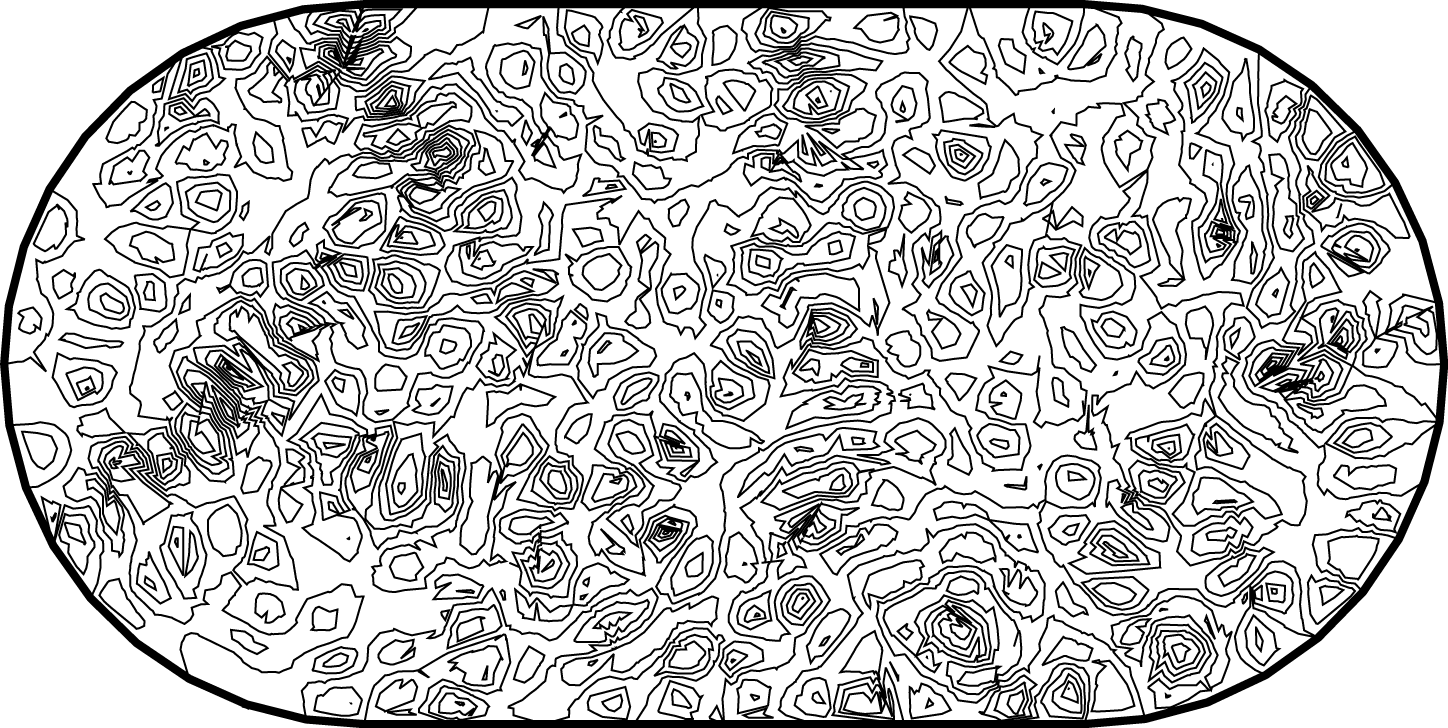
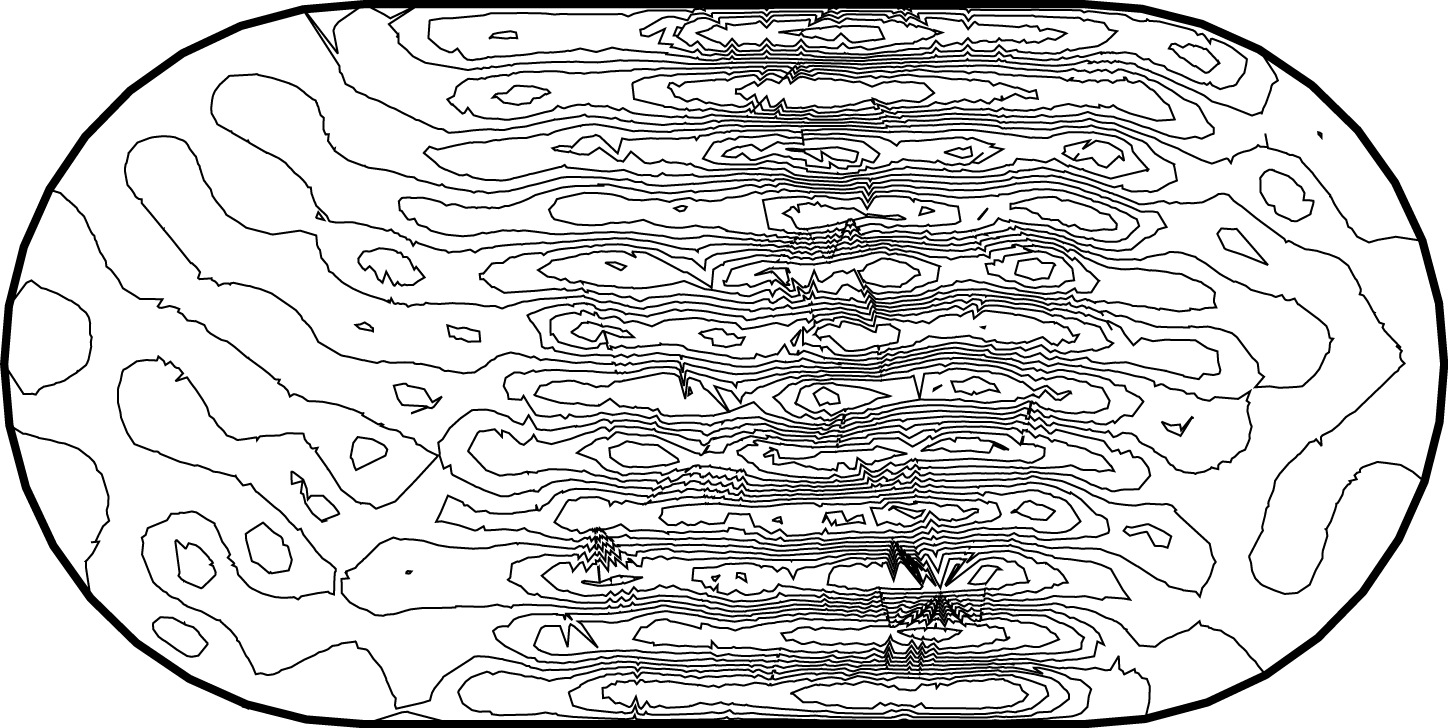
Quantum many-body scars
We observed quantum-scarred eigenstates in the theoretical model that describes a chain of Rydberg atoms. All atoms in the chain can be in two possible states: excited and ground state. Moreover there exist a constraint that prohibits two excited atoms to be adjacent to each other. We found a coherent oscillations in such a system which underlie the quantum-scarred eigenstates. Below we show the animated cartoon of this trajectory for L=8 atoms.
 Here the graph shows the space of all possible configurations, and the bottom shows the average density of excitation on each site. Animation shows oscillations between two patterns.
Here the graph shows the space of all possible configurations, and the bottom shows the average density of excitation on each site. Animation shows oscillations between two patterns.
